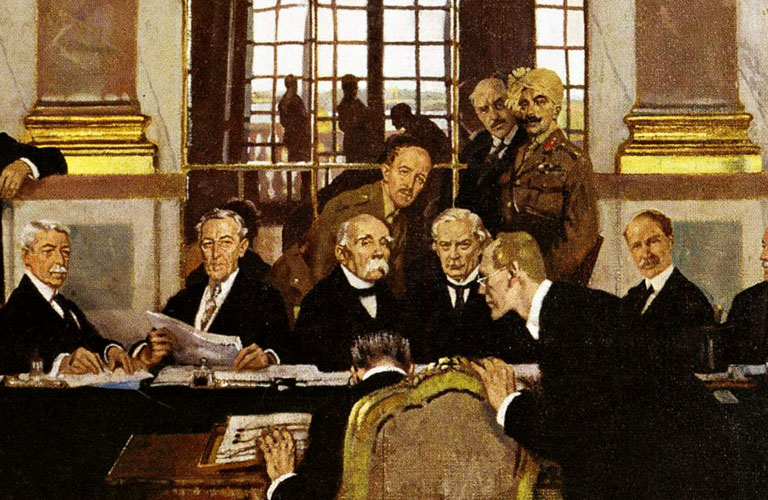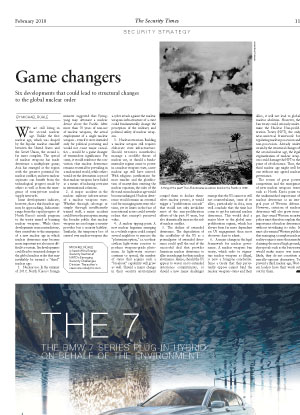Six developments that could lead to structural changes to the global nuclear order

We are still living in the second nuclear age. Unlike the first nuclear age, which was shaped by the bipolar nuclear standoff between the United States and the Soviet Union, the second is far more complex. The spread of nuclear weapons has made deterrence a multiplayer game; Asia has emerged as the region with the greatest potential for nuclear conflict; and new nuclear aspirants can benefit from the technological progress made by others as well as from the emergence of semi-private nuclear supply networks.
Some developments indicate, however, that a third nuclear age may be approaching. Indications range from the rapid progress of North Korea’s missile program to the treaty aimed at banning nuclear weapons. While these developments seem contradictory, they contribute to the emergence of a new nuclear age in which nuclear deterrence may become more important yet also more difficult to sustain. Six developments could lead to structural changes to the global nuclear order that may justifiably be termed a “third” nuclear age:
- Nuclear use. In the summer of 2017, North Korea’s foreign minister suggested that Pyongyang may detonate a nuclear device above the Pacific. After more than 70 years of non-use of nuclear weapons, the actual employment of a single nuclear weapon – even if it were intended only for political posturing and would not cause major casualties – would be a game changer of tremendous significance. For some, it would reinforce the conviction that nuclear deterrence remains essential for prevailing in a nuclearized world, while others would see the detonation as proof that nuclear weapons have failed as a means of inducing restraint in international relations.
- A major accident in the nuclear military infrastructure of a nuclear weapons state. Whether through sabotage or simply through insufficiently trained staff, a major accident could foster the perception among the broader public that nuclear weapons are a no longer a security provider but a security liability. Similarly, the temporary loss of control over nuclear weapons due a cyber attack against the nuclear weapons infrastructure of a state could fundamentally change the perception of the military and political utility of nuclear weapons.
- Nuclear terrorism. Building a nuclear weapon still requires elaborate state infrastructure. Should terrorists nonetheless manage a credible threat of nuclear use, or should a fundamentalist regime come to power in a nuclear weapons state, a new nuclear age will have arrived. With religious justifications for mass murder and the glorification of martyrdom entering the nuclear equation, the rules of the first and second nuclear age would become unhinged. Nuclear deterrence would remain an essential tool for managing interstate relations, yet its limits in the face of non-rational actors could severely reduce that concept’s perceived value.
- A nuclear tipping point. A new nuclear hegemon emerging in a volatile region could compel several neighbors to exercise the “plutonium option,” i.e. use their civilian light-water reactors to produce weapons-grade plutonium. As light-water reactors continue to spread, the number of states that acquire such a “breakout” capability will grow as well. Should a major change in their security environment compel them to declare themselves nuclear powers, it would trigger a “proliferation cascade” that would not only invalidate most of the non-proliferation efforts of the past 50 years, but also dramatically increase the risk of nuclear conflict.
- The decline of extended deterrence. The degradation of the credibility of the US as a promulgator of extended deterrence could spell the end of the successful deal that provides American nuclear deterrence to allies in exchange for their nuclear abstinence. Hence, should the US appear to waver on its extended deterrence commitments, or should a new major challenger emerge that the US cannot or will not counterbalance, some of its allies, particularly in Asia, may well conclude that the time has come to opt for national nuclear deterrence. This would deal a major blow to the global non-proliferation regime, which has always been far more dependent on US engagement than most observers dare to admit.
- A major change in the legal framework for nuclear governance. A nuclear weapons ban treaty, which seeks to stigmatize nuclear weapons as illegal, is now a foregone conclusion. Since a treaty that they persistently oppose cannot bind the nuclear weapons states and their allies, it will not lead to global nuclear abolition. However, the ban treaty could seriously undermine the Nuclear Non-proliferation Treaty (NPT), the only near-universal framework for regulating nuclear possession and non-possession. Already under strain by the structural changes of the second nuclear age, the legal stigmatization of nuclear weapons could damage the NPT to the point of obsolescence. Thus, the third nuclear age might well be one without any agreed nuclear governance.
The return of great power competition and the emergence of new nuclear weapons states such as North Korea point to the undiminished importance of nuclear deterrence as an integral part of Western defense. However, criticism of nuclear deterrence will also grow stronger. Any sound Western security policy must therefore explain the importance of nuclear deterrence without trivializing its risks. It must also remind Western publics that managing a complex nuclear reality requires more than merely claiming the moral high ground; if proposals such as the ban treaty would make major war more likely, they do not constitute a morally superior alternative. To prevent a third nuclear age, Western leaders have their work cut out for them.
MICHAEL RÜHLE
is head of the Energy Security Section at NATO’s Emerging Security Challenges Division. The author’s views are solely his own.




